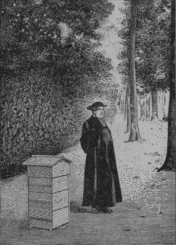
Warré plans
Warré methods
Warré modifications
Warré precursors
Groups / Fora
Google
e-group
Biobees.com
forum
Abbé Warré's book
Beekeeping for All:
Populating a Warré hive by transferring comb
The best way to start a Warré colony is with a swarm, or, failing that an artificial swarm such as a commercial package. However, the need sometimes arises to populate the hive with bees already on brood comb. Letting a frame hive 'grow down' into a Warré can be slow and frustrating. Warré called this 'superimposition' and advised against it because he found that, even with a good nectar flow, the bees could still stay in the frame hive on top (1).
The other option is to transfer combs directly into the Warré hive. This could apply to either a frame hive or a feral/wild colony being recovered from an accessible cavity. This page is not a detailed manual on how to do it but gives enough information for the moderately experienced beekeeper to adapt it to their own situation.
We illustrate three alternatives: 1) tying the comb to Warré top bars; 2) enclosing the combs in specially made split frames that are openable like a book; 3) propping combs up with spacer sticks.
1) Tying comb to top-bars (2)
The bees are shaken off the frames into a prepared Warré hive using a funnel. It helps to minimise flying if the funnel projects some way into the Warré box (3). A cheap funnel can be made with cardboard and sticky tape, then covered with plastic bag film to make it slippery. The entire operation illustrated in the photos below was done without the use of a smoker.
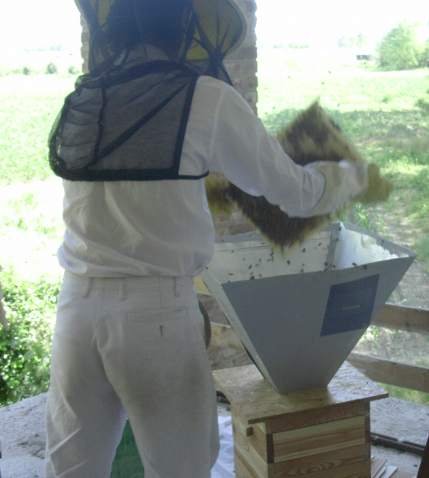
Bees, especially those that took to the air during shaking the frames, gather at the hive entrance.
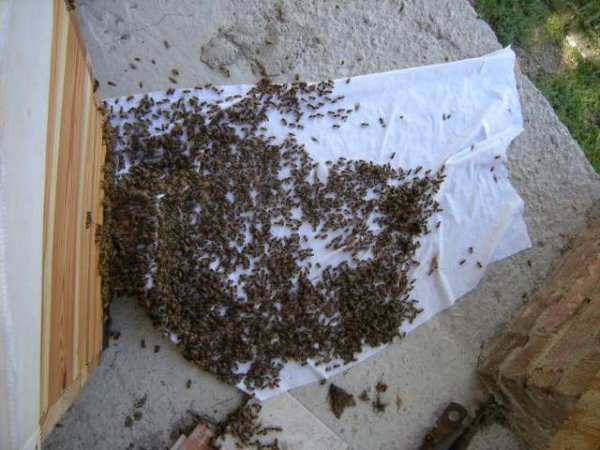
Combs are cut from the frames with a knife.
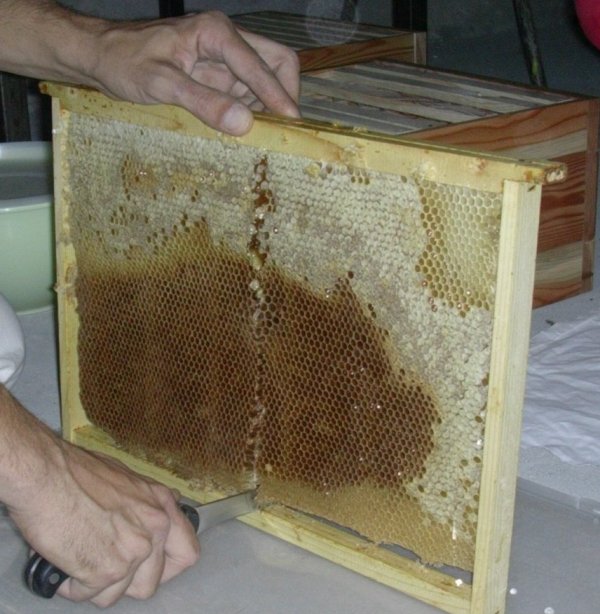
Reinforcing wires are cut with scissors.
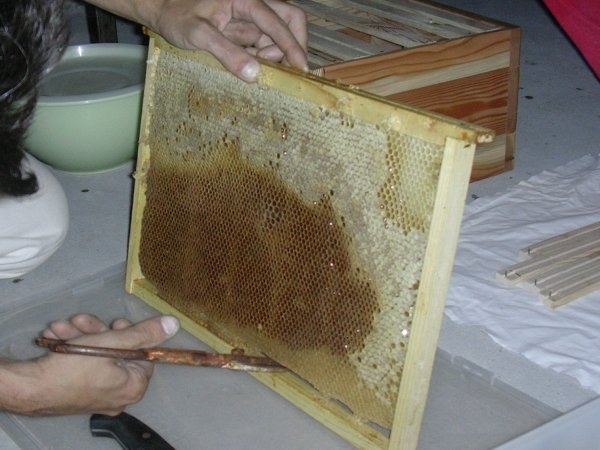
The combs are cut to fit the Warré box and inserted in one box or more, as near as possible to the order and orientation in the source hive.
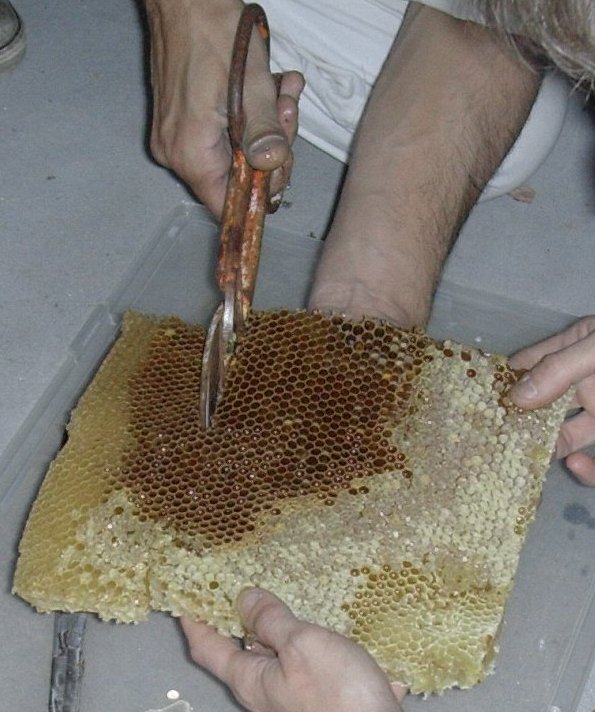
The combs are sewn onto the Warré top-bars with natural fibre string (e.g. cotton) and a large needle.
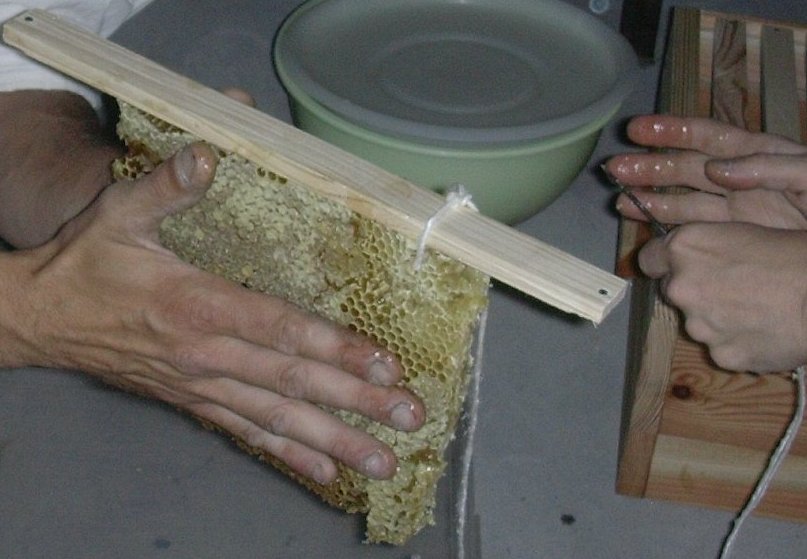
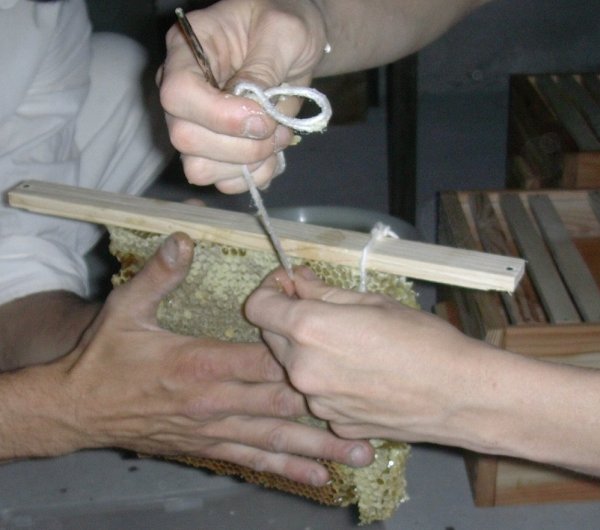
After placing the combs on their top bars in the Warré hive -- in the example below, a Warré modification with windows (4) -- the bees fix it to the top bars and fill in the gaps round the edges.
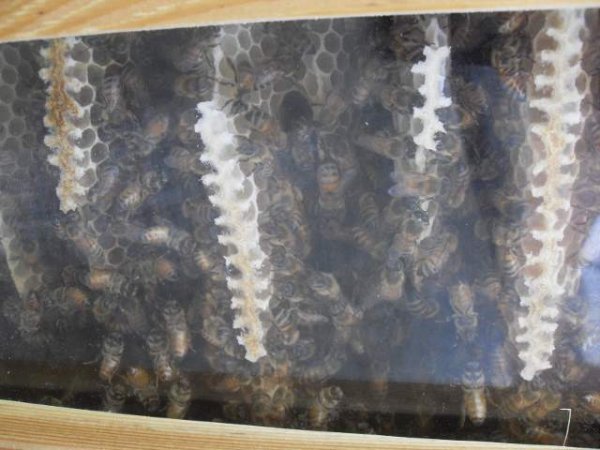
2) Enclosing combs in split frames (5)
As many split frames are prepared as there are combs to transfer. The frames are a modification of those used by Delon, comprising a wooden top-bar and a 'U'-shaped wire forming the bottom and sides (6). The thinness of the wire allows its integration into the comb margins.
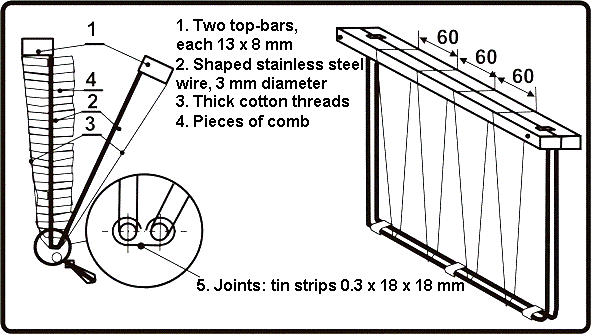
Above: diagram of split frame; below: photo of a split frame.
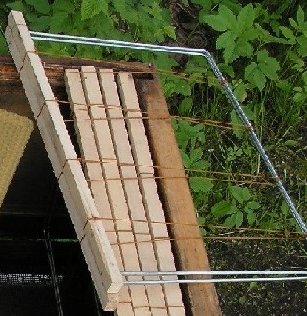
Below: A split frame opened out ready to receive comb cut from a colony on frames or from a feral/wild colony in an accessible cavity.
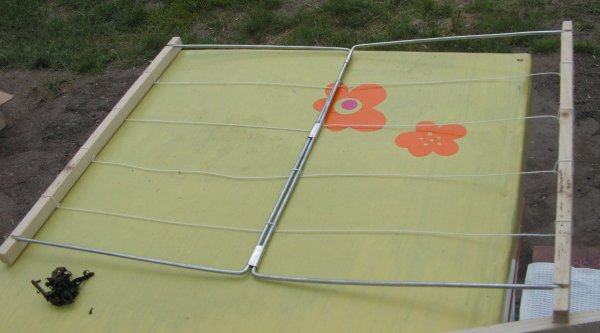
Below: A split frame with comb already partly infilled by bees.
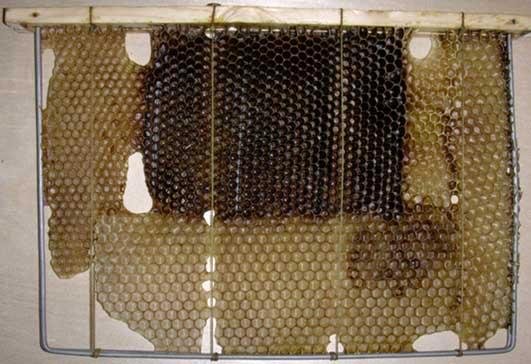
See also http://www.beesource.com/build-it-yourself/removeable-swarm-catching-frames/
3) Propping combs up with spacer sticks (7)
Staple chicken wire netting to the bottom of a Warré box. Cut the combs out of the frames or a feral cavity and trim to fit the Warré box while trying not to cut through brood. Sit the comb right way up on top of the chicken wire, spaced by some bamboo skewers, diagonally if necessary to allow bee spaces between the combs. Try to fill the box with the cutout comb, even if the comb is empty of brood or stores. Place this box over an empty Warré box below it. Put a feeder on top if there is no nectar coming in. Brush or shake in the rest of the bees and, if the queen has been found and caged at some point in the process, release her into the top box.
The following shows this manoeuvre being done with a frame
hive:
http://www.stratfordbeekeepers.org.uk/PENotes/WildColonies.htm
References and acknowledgements
1) Emile Warré (2007) Beekeeping For All, page 83
2) We thank Nicola Savio for permission to use the photos, some of which were taken from Nicola's blog at http://ortodicarta.wordpress.com/2009/06/17/un-motobecane-nella-testa/
3) http://www.dheaf.plus.com/warrebeekeeping/warre_funnel.htm
4) http://warre.biobees.com/guillaume.htm
5) We thank Vladimir Kuryshev (aka Petrovich) for permission to
use the photos, some of which come from the following sources:
http://i047.radikal.ru/0908/03/bc54b026237e.jpg;
http://s40.radikal.ru/i087/0908/01/2db5c943c266.jpg
6) http://warre.biobees.com/delon.htm
7) Posted by Norman Weston to warrebeekeeping at Yahoogroups on 12 May 2010.